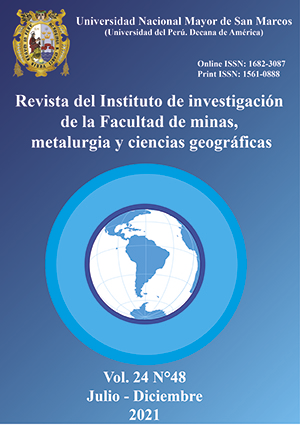Environmental risk analysis in the process of obtaining secondary lead in Peru
DOI:
https://doi.org/10.15381/iigeo.v24i48.20755Keywords:
Lead acid battery, recycling, environmental risk, sustainable, control measuresAbstract
In recent times there has been a great increase in the production of refined lead through the recycling of lead acid batteries. Their ease of collection and high reuse rates represent a sustainable alternative, only if they are carried out in a proper way. If an environmental framework is not established to ensure adequate preservation of natural resources and protection of human health, their use would not be sustainable. In this context, this study established an environmental risk analysis in all stages of the lead acid battery recycling process in order to identify possible environmental risk scenarios. The study was carried out under the methodology based on the UNE 150006-2008 standard. The results obtained reveal that at a global level there is a moderate environmental risk with a characterization of 57.5%, however, with respect to the human environment, a significant risk of 68% can be identified with 10 high risk scenarios for which measures of control.
Downloads
Published
Issue
Section
License
Copyright (c) 2021 Diego Aaron Valdivia Huamán

This work is licensed under a Creative Commons Attribution 4.0 International License.
AUTHORS RETAIN THEIR RIGHTS:
a. Authors retain their trade mark rights and patent, and also on any process or procedure described in the article.
b. Authors retain their right to share, copy, distribute, perform and publicly communicate their article (eg, to place their article in an institutional repository or publish it in a book), with an acknowledgment of its initial publication in the Rev. Inst. investig. Fac. minas metal cienc. geogr.
c. Authors retain theirs right to make a subsequent publication of their work, to use the article or any part thereof (eg a compilation of his papers, lecture notes, thesis, or a book), always indicating the source of publication (the originator of the work, journal, volume, number and date).























